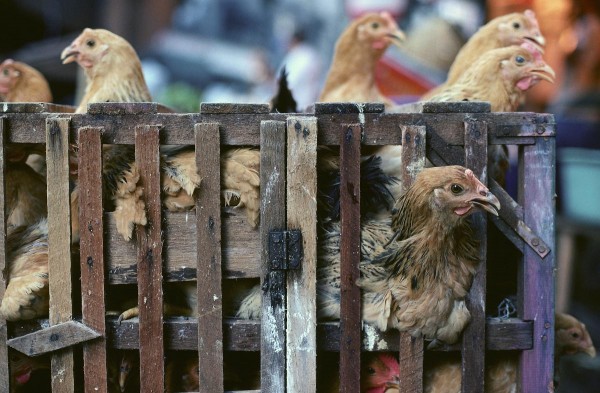
New research published in the journal Environmental Science & Technology Letters reveals in-depth how deadly per- and poly-fluoroalkyl substances, also known as PFAS, are leaching out of plastic containers and contaminating the food products they contain.
Confirming what earlier research also found, the study focused on the tendency of PFAS to contaminate various pesticide products via the plastic storage containers that hold them. It turns out that the very same thing is happening to food products stored in plastic containers.
The data is so disturbing and serious that the United States Environmental Protection Agency (EPA) has issued a warning to the public about the potential for direct PFAS contamination of food.
Scientists from Notre Dame University tested a variety of products from ketchup and mayonnaise to shampoo and detergents, discovering along the way that PFAS are leaching right out of plastic containers into the food and other consumer products they contain.
"Not only did we measure significant concentrations of PFAS in these containers, we can estimate the PFAS that were leaching off creating a direct path of exposure," said study co-author Graham Peaslee, PhD, a professor of physics in the Department of Physics and Astronomy at Notre Dame.
(Related: Many feminine hygiene products, including some "organic" brands, contain high levels of PFAS chemicals.)
EPA issues new standards for two PFAS, PFOA and PFOS, limiting their concentration in drinking water to no more than four parts per trillion (ppt)
The revelations prompted the EPA to take further regulatory action against PFAS. From now on, two specific PFAS, PFOA (perfluorooctanoic acid) and PFOS (perfluorooctane sulfonic acid), will be limited in drinking water to no more than four parts per trillion (ppt).
This is a good start, but the EPA's regulatory action is limited in scope in that it only requires monitoring a couple PFAS – and there are many more hiding out there beyond just PFOA and PFOS.
The problem stems from companies' use of HDPE, or high-density polyethylene, in containers. This type of plastic can be either fluorinated or not, but it remains unclear how to tell with the naked eye unless a manufacturer specifically labels the product as non-fluorinated.
Fluorinating HDPE plastic containers "allows for cheaper and more efficient production of plastics that contain desirable properties, primarily increased barrier properties," the study explains.
Put simply, fluorine in plastic helps to protect its contents against degradation from gases, water vapor, light, and other factors that can negatively impact food and other consumer products over time.
Everything from foodstuffs to shampoo to motor oil to detergents to pesticides is stored in HDPE plastic containers that are oftentimes fluorinated. This represents a serious public health threat as perpetual PFAS exposure over time can lead to an accumulation of the toxins inside people's bodies.
For their research, scientists from Notre Dame collected food samples from glass jars and carefully placed them into HDPE containers, both fluorinated and non-fluorinated. They then tested contamination levels using plain water, methanol, and acetone as reference points.
The food samples added to both treated and untreated HDPE containers, which included ketchup, olive oil, and mayonnaise, were then analyzed for their PFAS levels. This was followed by further tests at varying temperatures, i.e., some of the plastic containers were frozen while others were heated.
"Results from even nonfluorinated containers represented a risk, ranging from 10 parts per trillion to 880 parts per trillion. Fluorinated containers hit between an astounding 45,120 and 94,810 ppt," reported The Defender about the findings.
"These numbers include a summation of a range of PFAS analytes, including PFOA, PFDA, PFBA and many others."
The latest news about the hidden plague of noxious chemicals in the general food supply can be found at Chemicals.news.
Sources for this article include:
Please contact us for more information.















